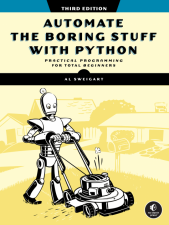Make Lively Movement Animation with PyTweening's Tweening Functions
Posted by Al Sweigart in misc
Tweening functions allow you to easily add many different styles of natural-seeming movement to the graphics in your program. In this blog post, you'll learn about how tweening functions can make more lively movement animations using Pygame and the PyTweening third-party library. Tweening functions apply to any programming language, but this tutorial has actual Python code for you to run and experiment with. Start by installing these libraries by running pip install pygame and pip install pytweening from the terminal. Then follow along with the code examples.
